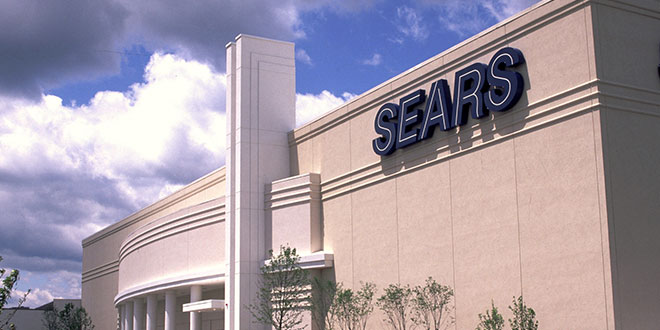When Sears Holdings recently announced it has “substantial doubt” about its ability to continue its business, it confirmed the fact that the retailer has many more struggles to face.
While Sears was once considered “America’s largest retailer,” its recent problems provide lessons for independent business owners to learn from, according to an article by Entrepreneur.
The retail chain began as a business that stood out due to its expertise in catalog sales, which was the on-demand shopping method of the past. However, trouble came with “the rise in popularity of Walmart, which offered similar goods for cheaper prices, and Amazon, which led the charge on e-commerce and has spent billions of dollars on capitalizing on fast delivery,” according to Entrepreneur.
Sears has been facing a steady decline over the past decade, yet Jeremy Bodenhamer, CEO of logistics company ShipHawk suggested in a VentureBeat article that Sears was “in the perfect position to crush Amazon,” according to Entrepreneur.
Bodenhamer theorized that if Sears would change direction and invest in infrastructure, like using brick-and-mortar stores as warehouses for final delivery, that would allow the retailer to beat Amazon Prime in speed and convenience.
However, Sears continues to cut costs, closing 2,000 stores and firing over 200,000 employees in the last 10 years, the article adds. While its intention makes sense financially, the company “ended up distancing itself from customers and losing ground to a competitor in its key growth strategy.”
So how can an independent retailer learn from Sears’ mistakes? Here are some tips from the Entrepreneur article:
- Assess the potential of your company assets and pay attention to your competitors’ growth strategies. By staying on top of your company’s assets and keeping an eye on the competition, you can stay on track with changes in the marketplace and consumer expectations, the article says. For an independent home improvement retailer, think about what your assets are and stay up-t0-date on retail trends whenever possible.
- Your business must be mindful of how to add value for customers. According to the Entrepreneur article, Amazon has been able to provide value for customers by honing the challenge online retailers face, which is the supply chain. They shorten wait times and open a newly created channel for external partners. So how can your retail business add value? Perhaps you offer special services, like buy online, pick up in store. Look for ways to please your customers and surprise them in a good way.
To read the full article from Entrepreneur, click here.
 Hardware Retailing The Industry's Source for Insights and Information
Hardware Retailing The Industry's Source for Insights and Information








